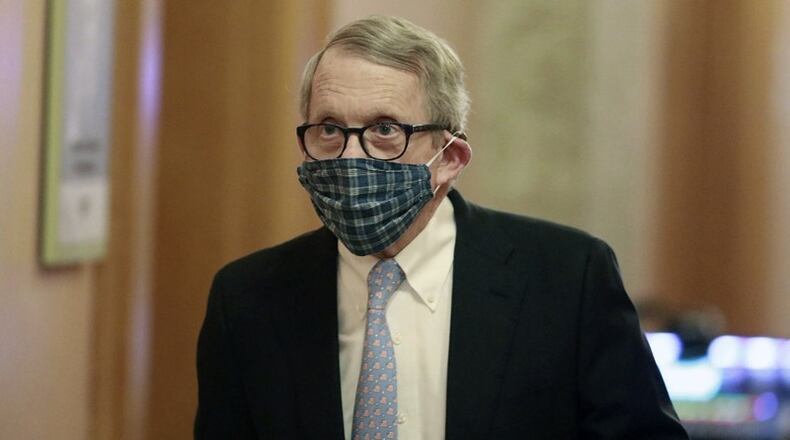However, there is adequate space for patients. None of the regions have hit the “concerning” threshold of 80% overall use of ICU beds, the governor said.
>> Coronavirus: Complete Coverage
There were about 500 to 550 total COVID-19 patients in hospitals last week and 650 this week, he said.
ICU and ventilator use has remained steady, but there is an increase in some areas, DeWine said.
Montgomery County also is one of two counties of concern mentioned on a coronavirus call with the White House. The other was Hamilton County.
Montgomery County went from an average of 10 new cases a day at the end of May to 40 new cases a day recently, DeWine said.
It is also seeing signs that more people are seeking medical care for the virus, he said. Outpatient visits grew from seven visits a day to 27.
Dr. Michael Dohn, medical director of Public Health - Dayton & Montgomery County, joined the governor’s press conference Monday, saying that people ages 20 to 39 make up one-third of coronavirus cases.
While younger adults are less likely to have severe coronavirus symptoms, there are still concerns about the virus’ long-term affects.
Dohn also shared concerns that the state could see more coronavirus cases due to the upcoming Fourth of July holiday on Saturday. He said people will likely be “intermingling” over the holiday, resulting in clusters of cases.
>> Huber Heights pushes back on being called coronavirus ‘hot spot’
With the increase in cases, more businesses, especially those in southwest Ohio, are concerned as spikes in other states have resulted in industries closing again, Lt. Gov. Jon Husted said.
The Ohio Department of Health reported hospital admissions at 7,746 and ICU admissions at 1,961 in the state.
The ODH is reporting 51,046 total cases of coronavirus, an increase of 737, as well as 2,818 total deaths attributed to the virus in Ohio.
There have been 47,524 confirmed cases and 2,575 confirmed deaths.
Total case numbers are higher because they include confirmed cases plus probable cases.
DeWine urged Ohioans to “get serious” and continue social distancing and wear masks.
He said if people want to go out and live their lives, the mask is a symbol of freedom.
The governor also extended public health orders through the week as the state prepares for its next phase in the pandemic.
More details about planning for the next phase, including for K-12 schools, will be available Thursday, DeWine said.
>> Needed: Nurses. A lot of them
One update the governor did give was regarding nursing homes.
Visitations can resume starting July 20, but facilities must consider the case status in the community, cases status in the nursing home, staffing levels, hospital capacity, access to testing for residents and staff and personal protective equipment supplies when allowing visitors.
Patrick Schwartz, spokesman for LeadingAge Ohio, which represents nonprofit nursing homes and other long-term care providers, said flexibility was a hallmark of the assisted living visitation guidelines developed jointly with provider groups such as LeadingAge Ohio.
“It is important that the same flexibilities are offered to nursing homes, all of which are in unique situations when it comes to facilities, staffing and COVID status,” he said.
>> Coronavirus: Free pop-up testing attracts 2,200+ in Dayton, Xenia
Ohio’s 70,000 nursing home residents have been in visitor isolation since the start of the pandemic. This has left spouses separated from each other, parents separated from children and families stuck in limbo as three months dragged on apart.
“Social isolation is as dangerous to an older adult as smoking cigarettes, so we look forward to seeing residents and loved ones safely connect outdoors. With cases on the rise in Ohio, it is even more important now that adequate supports and priority access to PPE are given to providers on the front lines of this crisis,” Schwartz said.
RELATED CONTENT:
>> Needed: Nurses. A lot of them
About the Author


